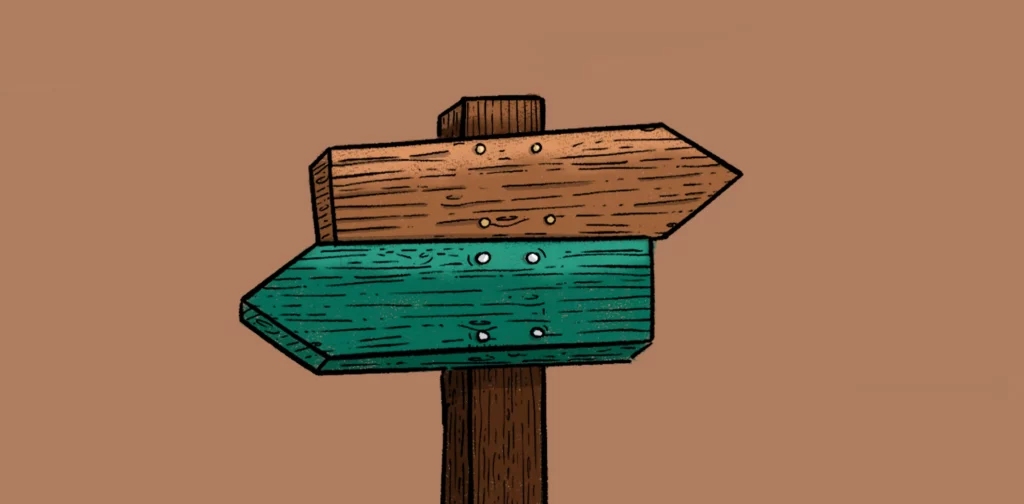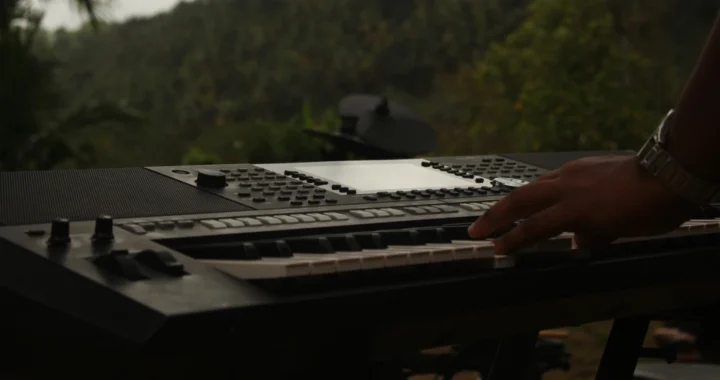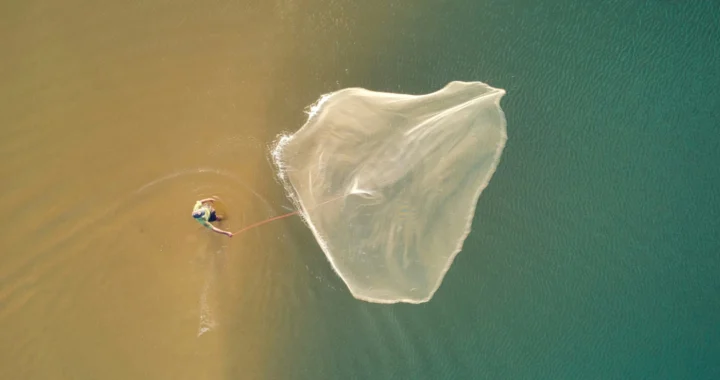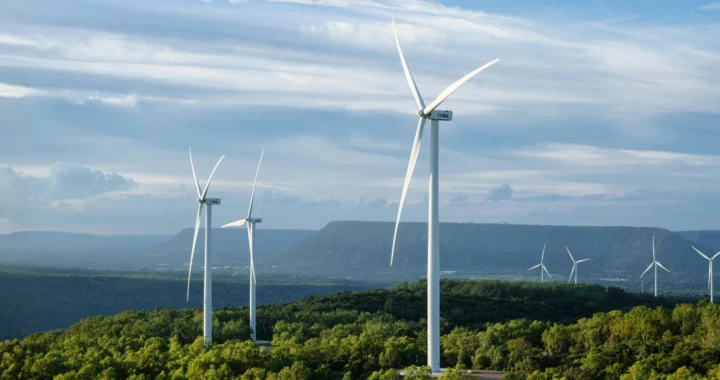A Tale of Two Futures

Illustration by Irhan Prabasukma.
In the realm of sustainable development, the canvas of the future is vast and varied, inviting us to paint with the brushes of our actions, policies, and collective will. We stand at a critical juncture, where the decisions of today beckon us toward divergent paths of tomorrow. This narrative explores the visions of what lies ahead, delving into the philosophical and empirical nuances that define the potential landscapes of our world.
Standing at a crossroads
Humanity, with its unparalleled ingenuity and capacity for adaptation, has long stood at the crossroads of innovation and exploitation. The modern era, characterized by rapid technological advancements and global interconnectedness, has presented us with unprecedented opportunities to foster a world where economic growth, environmental sustainability, and social equity coexist harmoniously. Yet, the shadow of environmental degradation, spurred by unsustainable practices, looms large, threatening to disrupt the delicate balance of our planet’s ecosystems and the very fabric of human society.
The tale of two futures emerges from this backdrop, each a reflection of the choices we are poised to make. On one hand, there lies the vision of a regenerative world, a beacon of hope where humanity has risen to the challenge of sustainable development. In this world, renewable energy sources light up our cities, green technologies drive our economies, and a renewed sense of global solidarity guides our actions. The principles of circular economies have been embraced, turning waste into wealth and drastically reducing our ecological footprint. Agriculture and industry have evolved to work in harmony with nature, preserving biodiversity and restoring the earth’s vital ecosystems. This is a world where the barriers of inequality have been dismantled, ensuring that the fruits of progress are shared equitably across societies and generations.
Contrastingly, the second vision presents a starkly different picture, a cautionary tale of what might be if we continue down the path of complacency and short-termism. Here, the relentless pursuit of economic growth at the expense of environmental health has led to a planet under siege. Climate change has accelerated, unleashing a cascade of catastrophic events – from devastating storms and floods to unbearable heatwaves and droughts. The loss of biodiversity has reached critical levels, disrupting ecosystems and the services they provide to humanity. Pollution chokes our air, water, and soil, poisoning the very resources upon which we depend for survival. In this future, societal divides have deepened, with the vulnerable and marginalized bearing the brunt of environmental and economic injustices. This is a world of missed opportunities, where the warning signs were ignored and the window for action closed.
A fundamental shift for sustainable development
The divergence of these futures underscores the urgency of the choices before us. The path to sustainability is fraught with challenges, yet it is paved with the potential for transformative change. It requires a fundamental shift in how we view our relationship with the planet – from one of dominance and extraction to one of stewardship and reciprocity. It calls for bold and decisive action across all sectors of society, from governments and businesses to communities and individuals. The transition to renewable energy, the adoption of sustainable agricultural and industrial practices, the protection of biodiversity, and the promotion of social equity are not just goals to aspire to; they are imperatives for survival.
This narrative serves not just as a speculative exploration of what could be but as a call to action. The future is not yet written, and we hold the pen. The choices we make today will determine the legacy we leave for generations to come. Will we rise to the challenge of crafting a world that values the health of the planet as much as it does economic prosperity? Will we embrace the principles of sustainable development, forging a path of equity, resilience, and respect for the natural world? Or will we retreat into the comfort of inertia, leaving a legacy of degradation and disparity?
Choosing the right path
The tale of two futures is, at its core, a reflection of the human condition – our capacity for both destruction and regeneration, our potential for both apathy and compassion. It invites us to envision the world we wish to inhabit and to take deliberate steps toward realizing that vision. The journey toward sustainable development is complex and uncertain, but it is also filled with hope and possibility. By engaging with these visions, we are reminded of our agency in shaping the future, of the power of collective action and innovation to steer us toward a world that thrives in harmony with nature.
As we stand at the crossroads, the tale of two futures beckons us to choose. The path we take will be a testament to our values, our foresight, and our commitment to the planet and its inhabitants. Let this narrative be a catalyst for reflection, for dialogue, and for action. Let us choose wisely, with the understanding that the future we envision is within our grasp, if only we dare to reach for it.
Editor: Kresentia Madina

Join Green Network Asia Membership
If you find this content useful, support Green Network Asia’s movement to create positive impact for people and the planet through public education and multi-stakeholder advocacy on sustainability-related issues and sustainable development. Get exclusive benefits for your personal and professional development.
Become a Member NowSetyo Budiantoro
Budi is the Manager of Economic Development Pillar at the National SDGs Secretariat of BAPPENAS and a part of Green Network Asia's Advisory Network. He is also active as a Sustainable Development Strategist at The Prakarsa, MIT Sloan IDEAS Fellow, Advisory Committee Member at Fair Finance Asia, and SDGs–ESG Expert at the Indonesian ESG Professional Association (IEPA).


 Building Heat Resilience Amidst Rising Risk in the Asia-Pacific
Building Heat Resilience Amidst Rising Risk in the Asia-Pacific  Sounds Right and Recognizing Nature as an Artist for Biodiversity Conservation
Sounds Right and Recognizing Nature as an Artist for Biodiversity Conservation  Statewide Treaty Bill: Australia’s First Treaty with the Indigenous Australians Passed in Victoria
Statewide Treaty Bill: Australia’s First Treaty with the Indigenous Australians Passed in Victoria  Involving Coastal Communities in Tackling Ghost Nets Pollution
Involving Coastal Communities in Tackling Ghost Nets Pollution  An Interview with Jasmin Lim, Chief Marketing Officer at BH Global
An Interview with Jasmin Lim, Chief Marketing Officer at BH Global  The Monsoon Wind Power Project Supports Energy Transition Across Borders in Southeast Asia
The Monsoon Wind Power Project Supports Energy Transition Across Borders in Southeast Asia